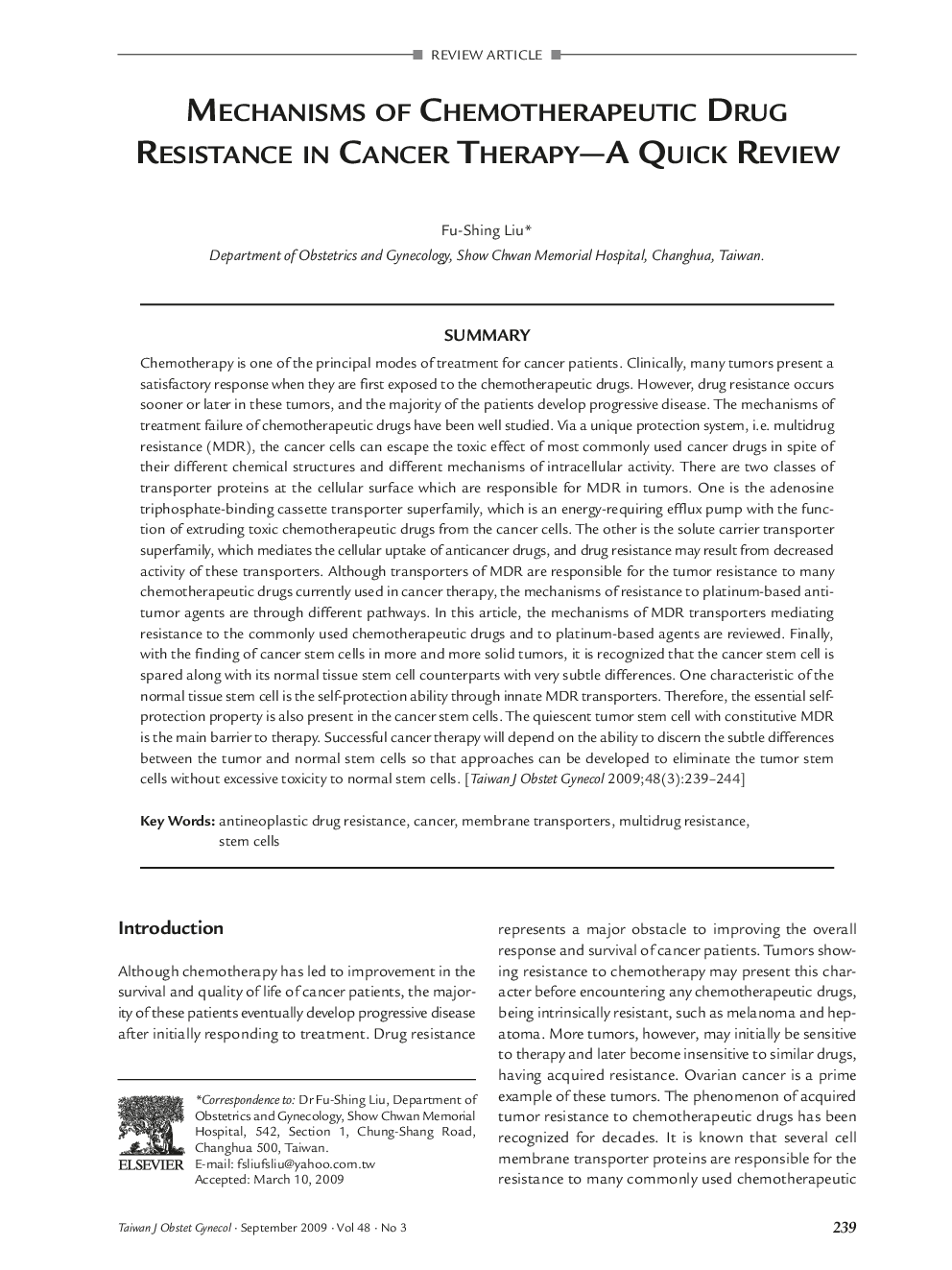| Article ID | Journal | Published Year | Pages | File Type |
|---|---|---|---|---|
| 3976096 | Taiwanese Journal of Obstetrics and Gynecology | 2009 | 6 Pages |
SummaryChemotherapy is one of the principal modes of treatment for cancer patients. Clinically, many tumors present a satisfactory response when they are first exposed to the chemotherapeutic drugs. However, drug resistance occurs sooner or later in these tumors, and the majority of the patients develop progressive disease. The mechanisms of treatment failure of chemotherapeutic drugs have been well studied. Via a unique protection system, i.e. multidrug resistance (MDR), the cancer cells can escape the toxic effect of most commonly used cancer drugs in spite of their different chemical structures and different mechanisms of intracellular activity. There are two classes of transporter proteins at the cellular surface which are responsible for MDR in tumors. One is the adenosine triphosphate-binding cassette transporter superfamily, which is an energy-requiring efflux pump with the function of extruding toxic chemotherapeutic drugs from the cancer cells. The other is the solute carrier transporter superfamily, which mediates the cellular uptake of anticancer drugs, and drug resistance may result from decreased activity of these transporters. Although transporters of MDR are responsible for the tumor resistance to many chemotherapeutic drugs currently used in cancer therapy, the mechanisms of resistance to platinum-based anti- tumor agents are through different pathways. In this article, the mechanisms of MDR transporters mediating resistance to the commonly used chemotherapeutic drugs and to platinum-based agents are reviewed. Finally, with the finding of cancer stem cells in more and more solid tumors, it is recognized that the cancer stem cell is spared along with its normal tissue stem cell counterparts with very subtle differences. One characteristic of the normal tissue stem cell is the self-protection ability through innate MDR transporters. Therefore, the essential self- protection property is also present in the cancer stem cells. The quiescent tumor stem cell with constitutive MDR is the main barrier to therapy. Successful cancer therapy will depend on the ability to discern the subtle differences between the tumor and normal stem cells so that approaches can be developed to eliminate the tumor stem cells without excessive toxicity to normal stem cells.
